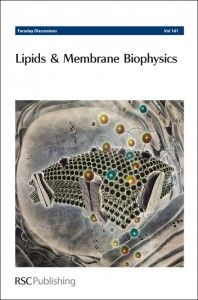This month sees the following articles in Faraday Discussions that are in the top ten most accessed for January:
Hydrogen evolution on nano-particulate transition metal sulfides
Jacob Bonde , Poul G. Moses , Thomas F. Jaramillo , Jens K. Nørskov and Ib Chorkendorff
Faraday Discuss., 2009,140, 219-231
DOI: 10.1039/b803857k
Realizing artificial photosynthesis
Devens Gust , Thomas A. Moore and Ana L. Moore
Faraday Discuss., 2012,155, 9-26
DOI: 10.1039/c1fd00110h
Titan and habitable planets around M-dwarfs
Jonathan I. Lunine
Faraday Discuss., 2010,147, 405-418
DOI: 10.1039/c004788k
Ionic Liquids: Past, present and future
C. Austen Angell , Younes Ansari and Zuofeng Zhao
Faraday Discuss., 2012,154, 9-27
DOI: 10.1039/c1fd00112d
Switchable domain partitioning and diffusion of DNA origami rods on membranes
Aleksander Czogalla , Eugene P. Petrov , Dominik J. Kauert , Veselina Uzunova , Yixin Zhang , Ralf Seidel and Petra Schwille
Faraday Discuss., 2013,161, 31-43
DOI: 10.1039/c2fd20109g
Introductory Lecture: Interpreting and predicting Hofmeister salt ion and solute effects on biopolymer and model processes using the solute partitioning model
M. Thomas Record , Emily Guinn , Laurel Pegram and Michael Capp
Faraday Discuss., 2013,160, 9-44
DOI: 10.1039/c2fd20128c
Spontaneous tubulation of membranes and vesicles reveals membrane tension generated by spontaneous curvature
Reinhard Lipowsky
Faraday Discuss., 2013,161, 305-331
DOI: 10.1039/c2fd20105d
Phase behavior of colloidal silica rods
Anke Kuijk , Dmytro V. Byelov , Andrei V. Petukhov , Alfons van Blaaderen and Arnout Imhof
Faraday Discuss., 2012,159, 181-199
DOI: 10.1039/c2fd20084h
Critical point fluctuations in supported lipid membranes
Simon D. Connell , George Heath , Peter D. Olmsted and Anastasia Kisil
Faraday Discuss., 2013,161, 91-111
DOI: 10.1039/c2fd20119d
Introductory Lecture: Basic quantities in model biomembranes
John F. Nagle
Faraday Discuss., 2013,161, 11-29
DOI: 10.1039/c2fd20121f
Why not take a look at the articles today and blog your thoughts and comments below.











 We are pleased to announce the publication of Faraday Discussion 161
We are pleased to announce the publication of Faraday Discussion 161